Traces of Traces: Time, Space, Objects, and the Forensic Turn in Photography
Abstract
:1. Contact Relics
Aubert also photographed the corpse of the Emperor in its coffin, but his apparently deliberate staging of the shirt seemingly demonstrates an awareness of how the material trace of a life can arguably generate a more powerful visual connection with the imagination than the actual body itself. This trace of a trace of the traumatic event provides perhaps a more contemplative space in which the viewer can engage in a dialog with the image without the fear that the representation of explicit violence might force them to look away. How contemporary photographers have used this potential of images of traces, of things and spaces as an alternative to more graphic representations of trauma is therefore the theme of this paper.Understood as material artefacts that are bound up with questions of temporality—where time is fractured, splintered—photographs have the power to tell another kind of history that is at odds with the commemorative practices of the state and its linear, forward march.
2. Traumatic Representation
The concept of traumatic realism thus has a powerful role in its potential to mobilize the viewer to action against the wrongdoing or abuse, as by returning the traumatic tear to the context of the social fabric, it can make the audience aware of the interconnections of the ordinary and the extreme. Images that combine the traumatic event or evidence of it with another quality such as aesthetics or everydayness often lead to what can be viewed as a genre slippage, in which the expected tropes of meaning of the image are disturbed. Rothberg notes how traumatic realism is “marked by the survival of extremity into the everyday world and is dedicated to mapping the complex temporal and spatial patterns by which the absence of the real, a real absence, makes itself felt in the familiar plenitude of reality” (Rothberg 2000, p. 67). The viewer is therefore forced to confront a misalignment between elements of the operation of the image, perhaps between form and content, or form and caption. These unexpected slippages subvert the viewer’s expectations of how to interpret a photograph and provide potential points from which the audience must actively make sense of what is in front of them. They can thus provide a powerful mechanism for engagement, and potentially greater understanding, as the viewer must do significant interpretative work to understand the image, work that can lead to a greater feeling of involvement. I argue that such slippages generate disturbances in the reading of the image that can potentially enhance the engagement of the viewer by inviting them to think more deeply about the meaning of the image, going beyond its immediate, surface interpretation. This disjunction is potentially one of the most powerful processes to facilitate audience engagement with images that goes beyond passive reception. This creates a contradiction between form and content that potentially forces the viewer to think more deeply about the meaning of the image by creating a disturbance in the reading of the photograph. The dichotomy between what is seen on the surface of the image and what is known about the image’s context creates a space where the viewer must do more work to make sense of what the photograph is or does. This shifting from a passive viewing of the image where every element in the construction of its meaning is in harmony and agreement, to the dissonance of the genre slippage makes the image more complex, and therefore potentially demands more engagement from the audience in actively constructing the meaning in the photograph rather than passively receiving it. In the case of images of atrocity, perhaps those that do not show the act of violence itself but rather allude to it by depicting the perpetrator or the aftermath might engage the imagination more successfully than those whose more graphic content might prove repulsive. Such images of the absence of visible violence can lead the viewer into an imaginative engagement with the nature of atrocity and abuse, and the nature of those who perpetrate it.The extreme and the everyday are neither opposed, collapsed, nor transcended through a dialectical synthesis-instead, they are at once held together and kept forever apart in a mode of representation and historical cognition.
3. The Durable Materiality of the Image
The concentrated energy of the photograph, what the visual anthropologist Elizabeth Edwards has called the “intensity of presentational form—the fragment of experience, reality, happening … contained through framing” (Edwards 2001, p. 17) can create what Marianne Hirsch has characterized as a “heteropathic” effect, that of feeling and suffering with the other, leading the viewer to the identification that “‘It could have been me: it was me also’, and, at the same time ‘but it was not me’” (Hirsch 1998, p. 9). They invite the audience to enter the emotional space of the subject, to attempt to relate their experiences, their life, to that of the lives depicted in the image. This links the private with the public. When the photograph is of an object belonging to a person, or of a space occupied by a person, this heteropathic connection is amplified in the space generated by the lacuna between the presence and the absence of the owner.spatial and temporal indicators are fused into one carefully thought-out, concrete whole. Time, as it were, thickens, takes on flesh, becomes artistically visible; likewise, space becomes charged and responsive to the movements of time, plot and history.
4. The Forensic Turn
5. A Conversation with the Subject
By focusing on the banal, everyday interior of the spaces that they are forced to occupy, he defuses the negative connotations of state propaganda, instead positioning the viewer in front of scenes that are as familiar and ordinary as their own living room,I’m not sure what use the representation of their human form would have because in most cases, pictures of Arab or South Asian men with beards is so toxic. People look at them and see for them the representation of someone who either they think is a terrorist or is connected to terrorism. I think not using those forms of representation is a way of taking that barrier out of the way in which the work may communicate or engage people.
In Clark’s photographs, time is in the present continuous, the interior of the house is always present, a cage encasing the occupant in an environment that never changes, remains constant. In Control Order House,16 Clark methodically surveyed every surface of the interior of the dwelling, undertaking a forensic mapping of the space, creating page layouts in the book in which the suspect is socially entombed by the state (Figure 2). The images offer no hiding place in which the occupant could take refuge, and in doing so emphasis the control the state has over their entire existence, with Clark observing thatIt’s a way of taking the exotic out of the visual representation of this subject. It’s a way of bringing it closer to every possible viewer’s everyday experience of spaces, places that they inhabit, frequent, objects that they use. But it’s also showing that our spaces were used for this process. This happened in our cities, quiet suburbs, and quiet villages. It’s not an exotic thing; it’s happening in everyday spaces run by people who are just going about their business. And in a sense that also means that these kinds of spaces are to a certain extent contaminated by this.
The photographs evoke both surveillance and claustrophobia. It gives form to one of the locations where the control order experience took place. We are looking at the control imposed by the state on an individual and the implications this has for his personal and familial stability.
When we lived with our parents, most of us had one room to ourselves. Our bedroom was the space we took ownership of, and in it we placed the things we loved most, reminders of what we longed for and aspired to. It was a place to which we could retreat from the world and feel protected. There we could express ourselves without judgment, and only our mothers could make us clean it.
Gilbertson sought to use his calm, reflective approach to make an emphatic connection with the viewer that brought home the cost of the conflict by charting its cost in his survey of intimate spaces that could belong in any family home instead of photographs from a distant war. He acknowledged his sense of failure in the representation of the ongoing conflict, sensing that in the bedrooms there was a potentially more powerful and personal connection,This loss has received only faint and fleeting official recognition. Mourning is treated as a private matter, as if these dead belonged only to their comrades and kin, and not to us all. For many years, the government, fearful of a negative effect on fragile public opinion, forbade the publication not only of images of combat casualties, but even of flag-draped caskets coming home. But isn’t it a dishonor to the dead to try to hide them from the nation they served?
Although both Control Order House and Bedrooms of the Fallen address the domestic space they produce very different responses. In Clark’s photographs, time is in the present continuous, the interior of the house is always present, remains constant. The formal strategy depicts detailed micro analysis in a comprehensive coverage of the entire space, with the color close-up images with their use of direct flash and framing seemingly generated by a machine set to systematically record every surface. This mosaic of images imparts the feeling of there being no hiding place in the space, with the flash exaggerating the sense that no detail of the space can be overlooked. The camera is intruding into the domestic space, violating it with its dehumanizing stare into every private nook and cranny. In Bedrooms of the Fallen, time is interrupted, stopped, and then frozen. These domestic interiors of what should be places of comfort, safety and refuge will never change again, as the life force that should disturb and rearrange them is no longer present. The bed will never again be rumpled, the books never read, the soft toys never held. The camera viewpoint surveys the whole scene in front as if from the perspective of someone standing at the door, at a reverential distance, as if standing before an altar. Gilbertson’s aesthetic creates a testimonial shrine to loss, while Clark’s generates a state controlled and surveyed cage encasing the occupant that never changes.The tragedy and the finality of this space was, to my heart, a more telling and honest explanation of what I had witnessed in Iraq than the countless photographs I had made there. The exploding bombs, morgues overflowing with corpses, and wounded soldiers being loaded onto helicopters were thousands of miles away. But in bedrooms like this, it felt like the conflicts were just outside, pressing against the walls.
She was told by one organization that they were “sort of refugeed out” (Estrin 2014), and asked herself “what, this isn’t serious enough for you? Aid workers described it as an emergency within an emergency within an emergency.” (Boyd 2014). However, she also felt that perhaps she was failing the situation in her own formal strategy, recounting how “I got all of the obvious pictures out of my system.” she said. “It’s only after I exhausted myself photographically, and was still unsatisfied, that I was forced to think differently.” (Estrin 2014) She was struck by the footwear of the refugees, noticing howI took the standard documentary-photojournalism pictures. The kind you see in magazines and newspapers, and I thought, it was a really big deal. These refugees had been walking for three to six weeks, carrying food, water, and what little possessions they had besides that. But news organizations weren’t interested in the standard documentary images. They said, if it gets more serious, let us know.
Inspired in part by having seen Gilbertson’s Bedrooms, she began to ask the refugees if she could photograph their shoes and interview them about their experiences; the response was almost universally positive, to the extent that they sometimes even queued to have the photographs made. “People understood intuitively what I was doing…. They clearly understood, the shoes were a testament of their journey and what they’d been through.” (Boyd 2014). Shoes have a unique relationship to their owner, they literally bear the imprint of the form of their owner, unlike most other forms of clothing they shape themselves over time to become a negative of the physical body (Figure 4). As Jensen notes, they bear the traces of the precarious life of their owners,there was a huge diversity of shapes and colors, many of them showed a huge amount of wear, that paid testament to the arduousness of their journey, the trek they had made. Many of them had these small repairs, stitches, pieces of melted plastic, that paid testament to the determination, the persistence, necessary to get through, to get to safety.
The incredible array of worn-down, ill-fitting, and jerry-rigged shoes formed a silent testimony to the arduous nature of the trek, the persistence and ingenuity of their owners, and the diversity of these individuals thrown together by tragic circumstance. Jensen felt that the shoes provided a different form of connection between the subject and the audience to that of a more conventional portrait or photojournalistic image.
As she honestly accepts, the aesthetic in the images is simple, direct, and straightforward, but this simplicity is in fact what gives the work its power and hold on the attention of the audience, although she notes that “These pictures are pictures that a 12-year-old could take. They are the most unskilled pictures I have ever taken in my professional career, but they’re clearly the most effective” (Estrin 2014). The work was exhibited as part of the Open Society Foundations’ “Moving Walls” exhibition at the society’s New York headquarters, and as the shows curator, Amy Yenkin recalls, had a profound effect on audiences, who “rather than dismiss the story as a crisis happening in a faraway place that has nothing to do with them, visitors are moved by the images. They want to go deeper…. A personal connection becomes the opening to the larger story” (Yenkin 2014).I hope the pictures ask more of the viewer than just the simple pity you feel when you look at images of terrible things that have happened to people. Because they don’t have a portrait attached to them, they don’t show the individual. Because I think it’s more effective to ask the viewer to look at the shoes, the name the age and where they’re from, and spend a little time with it. To imagine who this person is, and what they’ve been through. What if that was your pair of shoes and that represented a journey you had to make?”
As with Peress, Knight and Gafic in the former Yugoslavia, Ramos worked closely with the forensic investigators who were exhuming the remains. He took images of the clothes recovered from the victims’ bodies, laid out against a white background, with the fabric torn, rent, and decayed by the passage of time in the ground. (Figure 5) These fragile textiles, almost translucent, mark out the shape of the human form, appearing to grow to life size in the field of view of the viewer. Some are almost complete figures, others are missing limbs, and some are just a few scraps of bloodstained material. Each imager sis presented with data about the location the body was found, the gender, age, how long it had been missing, and the date of recovery. The work was originally published as “El Último Atuendo de los Desaparecidos” (The Last Outfit of the Missing) in the Salvadoran newspaper El Faro, and was subsequently published worldwide after it was awarded a prize in the 2014 World Press Photo Awards. Ramos and the newspaper published the work in the hope that the clothes could help families identify a missing person. He explains that “I thought the power that each one of these outfits had to tell the stories of the disappeared was great, and moreover, it gave a human element to a problem that had only been told through figures.” (Booker 2014) The photographic time in these images is also stopped dead at the point of the death of their wearer, but it also projects backward temporally to imagine the life that was cut short, the delicate details of the clothes telling stories about their wearer, the jeans, hoodies, and logos desperately familiar and mundane symbols of globalization.I was documenting the work of forensic anthropologists from the Institute of Legal Medicine, and I realized how important the clothes of the exhumed were to them. … They hope that through those clothes the families can recognize their missing relatives,
6. An Era of Traces
The specificity of a certain event became less relevant as such, and more relevant as a generic form of event. Not the specific road accident, a specific murder case or fire, but “an accident”, “a murder”, or “a fire”. This renewed definition included several things: taking a stand, refusing to try to illustrate the text, and relating to events as having a historical significance beyond their importance on the morrow when they appear in the press.
Funding
Conflicts of Interest
References
- Baer, Ulrich. 2002. Spectral Evidence. The Photography of Trauma. Cambridge: MIT. [Google Scholar]
- Bakhtin, Mikhail. 1981. Form of Time and Chronotope in the Novel. In The Dialogic Imagination: Four Essays. Edited by Michael Holquist. Austin: UTP, pp. 84–258. [Google Scholar]
- Booker, Maia. 2014. What They Wore to the Grave: The Last Outfits of El Salvador’s “Disappeared”. New Republic. September 16. Available online: https://newrepublic.com/article/119446/photos-fred-ramos-last-outfit-missing (accessed on 14 July 2018).
- Boyd, Clark. 2014. How Shoes Can Tell the Plight of Refugees in South Sudan. PRI. February 3. Available online: https://www.pri.org/stories/2014-02-03/how-shoes-can-tell-plight-refugees-south-sudan (accessed on 14 July 2018).
- Brook, Pete. 2013. This Incredibly Boring House Is a UK Terror Suspect’s Lockdown. Wired. April 15. Available online: https://www.wired.com/2013/04/edmund-clark-control-order-house/ (accessed on 14 July 2018).
- Brown, Bill, ed. 2003. A Sense of Things: The Object Matter of American Literature. Chicago: University of Chicago Press. [Google Scholar]
- Brown, Bill, ed. 2004. Things. Chicago: University of Chicago Press. [Google Scholar]
- Buchli, Victor, ed. 2002. Material Culture Reader. Oxford: Berg. [Google Scholar]
- Butler, Judith. 2009. Frames of War: When Is life Grievable? London: Verso. [Google Scholar]
- Campany, David. 2003. Safety in Numbness: Some remarks on the problems of “Late Photography”. In Where Is the Photograph? Edited by David Green. Brighton: Photoworks/Photoforum. [Google Scholar]
- Chisholm, Christie. 2014. Bedrooms of the Fallen: Preserved by Their Families as Memorials to Loved Ones Lost. Available online: http://archives.cjr.org/on_the_job/bedrooms_of_the_fallen.php (accessed on 14 July 2018).
- Danto, Arthur. 2003. The Abuse of Beauty: Aesthetics and the Concept of Art. Rockford: Open Court. [Google Scholar]
- Domanska, Ewa. 2006. History and Theory. Middletown: Wesleyan University, vol. 45, pp. 337–48. ISSN 0018-2656. [Google Scholar]
- Edwards, Elizabeth. 2001. Raw Histories. Photographs, Anthropology and Museums. Oxford: Berg. [Google Scholar]
- Estrin, James. 2014. A Sudanese Refugee Crisis, Photographed From the Ground Up. Lensblog NY Times. January 27. Available online: https://lens.blogs.nytimes.com/2014/01/27/a-sudanese-refugee-crisis-photographed-from-the-ground-up/?mcubz=0 (accessed on 14 July 2018).
- Geismar, Haidy, and Heather A. Horst. 2004. Materializing ethnography. Journal of Material Culture 9: 5–10. [Google Scholar] [CrossRef]
- Gigliotti, Simone. 2003. Unspeakable Pasts as Limit Events: The Holocaust, Genocide, and the Stolen Generations. Australian Journal of Politics & History 49: 164–81. [Google Scholar]
- Gilbertson, Ashley. 2014. Bedrooms of the Fallen. Chicago: University of Chicago Press. [Google Scholar]
- Graziano, Frank. 2015. Miraculous Images and Votive Offerings in Mexico. Oxford: Oxford University Press, pp. 172–74. [Google Scholar]
- Hauser, Kitty. 2007. Shadow Sites Photography, Archaeology, and the British Landscape 1927–1955. Oxford: Oxford Historical Monographs. [Google Scholar]
- Herschdorfer, Nathalie. 2011. Afterwards: Contemporary Photography Confronting the Past. London: Thames and Hudson Ltd. [Google Scholar]
- Hirsch, Marianne. 1998. Projected memory: Holocaust photographs in Personal and Public Fantasy. In Acts of Memory. Lebanon: University Press of New England. [Google Scholar]
- Jensen, Shannon. 2014. A Long Walk. Inge Morath Award. September 15. Available online: http://ingemorath.org/shannon-jensen-a-long-walk/ (accessed on 14 July 2018).
- Kratsman, Miki, and Ariella Azoulay. 2016. The Resolution of the Suspect. Santa Fe: Radius Books/Peabody Museum Press. [Google Scholar]
- Laughlin, Eleanor A. 2016. “Carte-de-visite Photograph of Maximilian von Habsburg’s Shirt,” Object Narrative. In Conversations: An Online Journal of the Center for the Study of Material and Visual Cultures of Religion. Available online: https://mavcor.yale.edu/conversations/object-narratives/carte-de-visite-photograph-maximilian-von-habsburg-s-execution-shirt (accessed on 14 July 2018). [CrossRef]
- Levitt, Laura S. 2018. “Miki Kratsman, Diptych from The Resolution of the Suspect.” Object Narrative. MAVCOR Journal 2. Available online: https://mavcor.yale.edu/mavcor-journal/miki-kratsman-diptych-from-the-resolution-of-the-suspect (accessed on 14 July 2018). [CrossRef]
- Liss, Andrea. 1998. Trespassing through Shadows, Memory, Photography and the Holocaust. Minneapolis: University of Minnesota Press. [Google Scholar]
- Lowe, Paul. 2014. The Forensic Turn: Bearing Witness and the ‘Thingness’ of the Photograph. In The Violence of the Image: Photography and International Conflict. Edited by Liam Kennedy. New York: I.B. Tauris. [Google Scholar]
- Mazzucchelli, Francesco. 2017. From the “Era of the Witness” to an Era of Traces. Memorialisation as a Process of Iconisation? In Mapping the ‘Forensic Turn’ Engagements with Materialities of Mass Death in Holocaust Studies and Beyond. Edited by Zuzanna Dziuban. Vienna: New Academic Press. [Google Scholar]
- Moeller, Susan. 1999. Compassion Fatigue. London: Routledge. [Google Scholar]
- Nee, Shawn. 2011. Interview: Ashley Gilbertson’s “Bedrooms of the Fallen”. Available online: https://boywithgrenade.org/2011/05/18/interview-ashley-gilbertsons-bedrooms-of-the-fallen/ (accessed on 14 July 2018).
- Noble, A. 2010. Photography and Memory in Mexico: Icons of Revolution. Manchester: Manchester University Press. [Google Scholar]
- Nolan, Rachel. 2011. A Conversation with Photographer Ashley Gilbertson. Available online: https://6thfloor.blogs.nytimes.com/2011/05/17/a-conversation-with-photographer-ashley-gilbertson/?mcubz=0 (accessed on 14 July 2018).
- Olivier, Laurent. 2011. The Dark Abyss of Time. Lanham: Altamira Press. [Google Scholar]
- Olsen, Bjornar. 2010. In Defense of Things: Archaeology and the Ontology of Objects. Lanham: Altamira Press. [Google Scholar]
- Poole, Deborah. 2005. An Excess of Description: Ethnography, Race, and Visual Technologies. The Annual Review of Anthropology 34: 159–79. [Google Scholar] [CrossRef]
- Reinhard, Mark, Holly Edwards, and Erina Duganne. 2007. Beautiful Suffering: Photography & the Traffic in Pain. Chicago: University Of Chicago Press. [Google Scholar]
- Rosler, Martha. 2004. ‘In Around and Afterthoughts (on Documentary Photography’, Decoys and Disruptions: Selected Writings, 1975–2001. Cambridge and London: The MIT Press. [Google Scholar]
- Rothberg, Michael. 2000. Traumatic Realism, The Demands of Holocaust Representation. Minneapolis: University of Minnesota Press. [Google Scholar]
- Rothberg, Michael. 2002. Between the Extreme and the Everyday; Ruth Kluger’s Traumatic Realism. In Extremities. Edited by N. Miller and J. Tougaw. Chicago: University of Illinois Press. [Google Scholar]
- Serres, Michel, and Bruno Latour. 1995. Conversations on Science, Culture, and Time University of Michigan Press. Available online: https://archive.org/stream/MichelSerresAndBrunoLatourConversationsOnScienceCultureAndTimeUniversityOfMichiganPress1995/Michel+Serres+and+Bruno+Latour-Conversations+on+Science%2C+Culture%2C+and+Time+University+of+Michigan+Press+%281995%29_djvu.txt (accessed on 16 July 2018).
- Shanks, Michael. 2002. Towards an Archaeology of Performance. Paper presented at SAA Meetings, Birmingham, AL, USA, August 19–25. [Google Scholar]
- Stear, Nils-Hennes. 2016. Edmund Clark and Crofton Black on the War on Terror. British Journal of Photography. August 1. Available online: http://www.bjp-online.com/2016/08/long-read-edmund-clark-and-crofton-black-on-the-war-on-terror/ (accessed on 14 July 2018).
- Struk, Janina. 2004. Photographing the Holocaust. Interpretations of the Evidence. London: I.B. Tauris & Co. Ltd. [Google Scholar]
- Tambiah, Stanley Jeyaraja, Miriam Goheen, and Felicity Aulino. 2013. Radical Egalitarianism: Local Realities, Global Relations. New York: Fordham University Press. [Google Scholar]
- Taryn, Simon. 2011. A Living Man Declared Dead and Other Chapters I–XVIII. Berlin: Gagosian Gallery, Wilson Center for Photography, and Neue Nationalgalerie. [Google Scholar]
- Taylor, John. 1998. Body Horror. Manchester: Manchester University Press. [Google Scholar]
- Walker, Ian. 1995. Desert Stories of Faith in Facts. In The Photographic Image in Digital Culture. Edited by Martin Lister. London: Routledge, p. 240. [Google Scholar]
- Weizman, Eyal. 2014. Introduction: Forensis. In Forensis: The Architecture of Public Truth. Edited by Forensic Architecture. Berlin: Sternberg Press, pp. 9–32. [Google Scholar]
- Yenkin, Amy. 2014. An Ordinary Item Tells the Story of an Extraordinary Journey. Open Society Foundations. April 24. Available online: https://www.opensocietyfoundations.org/voices/ordinary-item-tells-story-extraordinary-journey (accessed on 14 July 2018).
- Zysk, Jay. 2017. Shadow and Substance: Eucharistic Controversy and English Drama across the Reformation Divide. Notre Dame: University of Notre Dame Press. [Google Scholar]
| 1. | For an extended examination of this image see (Laughlin 2016). |
| 2. | For a fuller discussion of both the reign of Maximillian and the nature of firing squads in Mexican revolutionary history, see (Noble 2010, pp. 78–98). |
| 3. | François Aubert was a French painter and photographer who had immigrated to Mexico, and soon became the semiofficial photographer to the new Imperial court and to the city’s middle classes. He evidently used his connections to attend the grim event, photographing the firing squad and Maximillian’s body in its coffin. Aubert’s photographs of the drama are perhaps better known as the source material for Edouard Manet’s series of paintings from 1867 to 69, The Execution of Emperor Maximilian, depicting the moment when the riflemen’s bullets rip through the white shirt of the victim. |
| 4. | Ironically, the carte de visite format was popularised in Mexico by the Emperor himself, with images of him and his wife, Carlota, being circulated in advance of their arrival in the country. See (Noble 2010, p. 86) for a more extended account. |
| 5. | Frank Graziano defines contact relics or secondary relics as “objects or articles of clothing touched to the saint’s body or even the saint’s tomb and thereby imbued with the saint’s praesentia”. Like photographs, they thus became objects that “could powerfully displace holy presence across space and time” (Graziano 2015) See also (Zysk 2017; Tambiah et al. 2013). |
| 6. | The philosopher Arthur Danto, for example, argues that there are situations in which it “would be wrong or inhuman to take an aesthetic attitude, to put at a psychical distance certain realities—to see a riot, for instance, in which police are clubbing demonstrators, as a kind of ballet, or to see the bombs exploding like mystical chrysanthemums from the plane they have been dropped from” (Danto 2003, p. 22). Likewise, John Taylor has argued that “publishing images of the deaths of others is deeply suspect. What could be the motives of photographers who are in at the death, who may have stalked their prey like peeping toms with cameras, waylaying them only at the last and for the sake of a picture, voyeurs feeding a voyeuristic industry?” (Taylor 1998, p. 56). |
| 7. | Janina Struk points out the danger of revictimizing the victim in the scopophilic unease she feels in reviewing images of atrocity. Viewing photographs taken by the Nazis of the execution of Jews, she felt “ashamed to be examining this barbaric scene, voyeuristic for witnessing their nakedness and vulnerability, and disturbed because the act of looking at this photograph put me in the position of the possible assassin”. But she also felt that she had to do this, “as if the more I looked the more information I could gain” (Struk 2004, p. 3). Martha Rosler, in her influential essay on documentary photography claims that “Documentary, as we know it, carries (old) information about a group of powerless people to another group addressed as socially powerful” (Rosler 2004, p. 183). She argues forcefully that the focus has shifted away from the subject and onto the glorification of the imagemaker, and that the original honorable intentions of the “concerned photographer” have eroded over time into “trophy hunting” (Rosler 2004, p. 181), mutating the desire to effect change into the desire for personal satisfaction and success. She maintains that documentary photography “testifies, finally, to the bravery or (dare we name it?) the manipulativeness and savvy of the photographer” who “saved us the trouble” of personally being present in situations of “physical danger, social restrictedness, (or) human decay” (Rosler 2004, p. 180). See also Reinhard et al. (2007), Beautiful Suffering: Photography & the Traffic in Pain. |
| 8. | Gigliotti defines a “limit event” as an event or practice of such magnitude and profound violence that its effects rupture the otherwise normative foundations of legitimacy and so-called civilizing tendencies that underlie the constitution of political and moral community (Gigliotti 2003, p. 164). |
| 9. | For a useful account of the nature of traces and their relationship to photography, see (Hauser 2007). |
| 10. | This ability of the photograph to oscillate between past and present, to re-present the past into the present, is analogous to contemporary approaches to understanding time from a historical and archaeological perspective. The traditional historicist view that time is linear and progressive has been challenged by concepts of time as being folded, with moments connecting with each other across space and time rather than progressively one after the other (Seress and Latour 1995, p. 60). Time is thus interpreted as a fluid, interactive concept, a “river, forking, branching, slewing, slowing, rolling back on itself” or even a “crumpled handkerchief, in which apparently widely separated points may be drawn together into adjacency” (Shanks 2002). Similarly, Ulrich Baer argues that time is even more fragmented than this, and that rather than a linear narrative, “experienced time is also an attempt to acknowledge that for uncounted numbers of individuals, significant parts of life are not experienced in sequence but as explosive bursts of isolated events” (Baer 2002, p. 6). Butler concurs in this, maintaining that the photograph maintains a temporal projection that acts as a “kind of promise that the event will continue, indeed it is that very continuation, production and equivocation at the level of the temporality of the event: did those actions happen then? Do they continue to happen? Does the photograph continue that event into the future?” (Butler 2009, p. 84). |
| 11. | Many critics have elaborated on this developing genre of “Aftermath Photography”, or “Post Reportage” with David Campany claiming that photography is now a “secondary medium of evidence. This is the source of the eclipse of the realist reportage of events and the emergence of photography of the trace or ‘aftermath’” (Campany 2003, p. 27). Much of this work adopts aesthetics of observation and detachment, whilst others deploy an aesthetic that demonstrates the contradiction that the locations of atrocity are often simultaneously locations of striking visual quality. For an overview of the approach, see (Herschdorfer 2011) Also see (Walker 1995), and works by Ristelhuber, Seawright, Delahaye, and Sternfeld for examples of the genre. Many of these were gathered together in the exhibition at Tate Modern entitled Conflict, Time, Photography (2014). |
| 12. | I have explored these developments in more detail in (Lowe 2014). |
| 13. | These ideas are drawn from the context of the so-called “return to things,” “back to things,” and “turn to the nonhuman” that have appeared in the humanities since the late 1990s. Ewa Domanska explains that “In an attempt to reverse those tendencies, “new material studies” points to the agency of things, accentuating the fact that things not only exist but also act and have performative potential. Thus, in the “return to things,” it is not the topic that is new, but the approaches to things and the forms of studying them. (Domanska 2006, p. 339), See, for example, (Brown 2003, 2004), cf. also (Geismar and Horst 2004; Buchli 2002). |
| 14. | Other examples of this approach include the work of Gilles Peress, Gary Knight and Ziyah Gafic in the former Yugoslavia, again see (Lowe 2014). |
| 15. | Diane Zlatanovski describes a photographic typology thus “By definition, a typology is an assemblage based on a shared attribute. Patterns, both visual and intellectual, resonate and reveal themselves within collections. Information not apparent in isolation becomes visible in context—only through studying groupings are we able to discern similarities and contrasts. In observing collections of similar things, the beautiful variations become evident. And the closer you look, the more you see.“ http://www.thetypology.com/ABOUT-THE-TYPOLOGY. See Bernd and Hilla Becher’s visual typology of categories of industrial architecture for a photographic example of this approach. For one more directly related to the forensic turn, see (Taryn 2011). |
| 16. | In publicity for the book Clark explained the concept of control orders thus: “Control Orders were introduced under the Prevention of Terrorism Act 2005. Between 2005 and 2011, 52 men suspected of involvement in terrorism were under Control Orders and subject to various constraints. These included the power to relocate them to a house anywhere in the country, to restrict communication electronically and in person, and to impose a curfew. ‘Controlled persons’ were not prosecuted for terrorist-related activity and the evidence against them remained secret. One man was subject to these controls for more than four years. Control Orders were replaced by Terrorist Prevention and Investigation Measures (TPIMs) in 2012.” http://www.herepress.org/publications/edmund-clark-control-order-house/. |
| 17. | In some cases the photographs were published along with interviews with the refugees, for example in the Telegraph Magazine, in other cases they were presented as a grid of images as in Newsweek where the captions presented the names and ages of their owners. |
| 18. | See (Levitt 2018). |
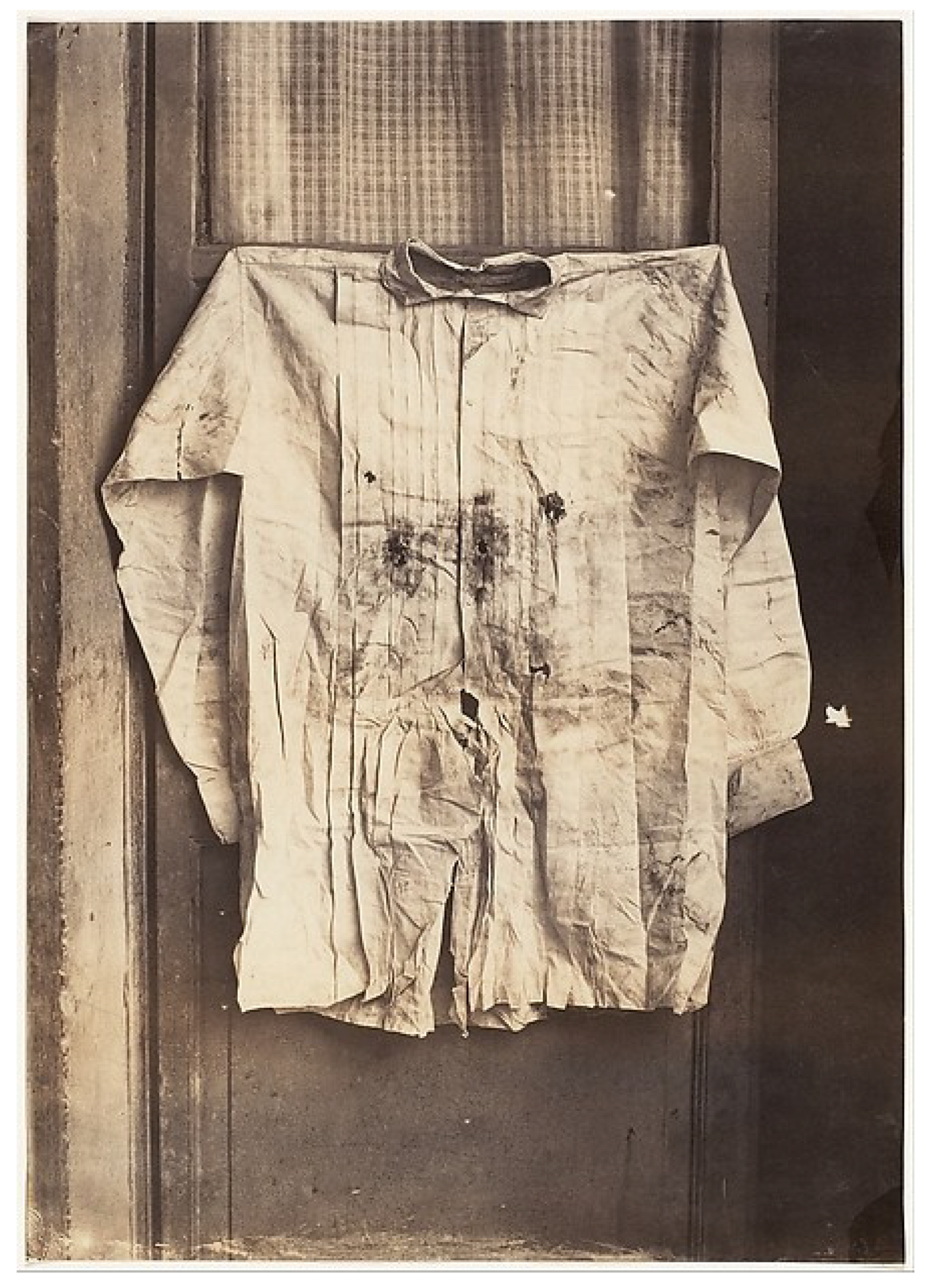
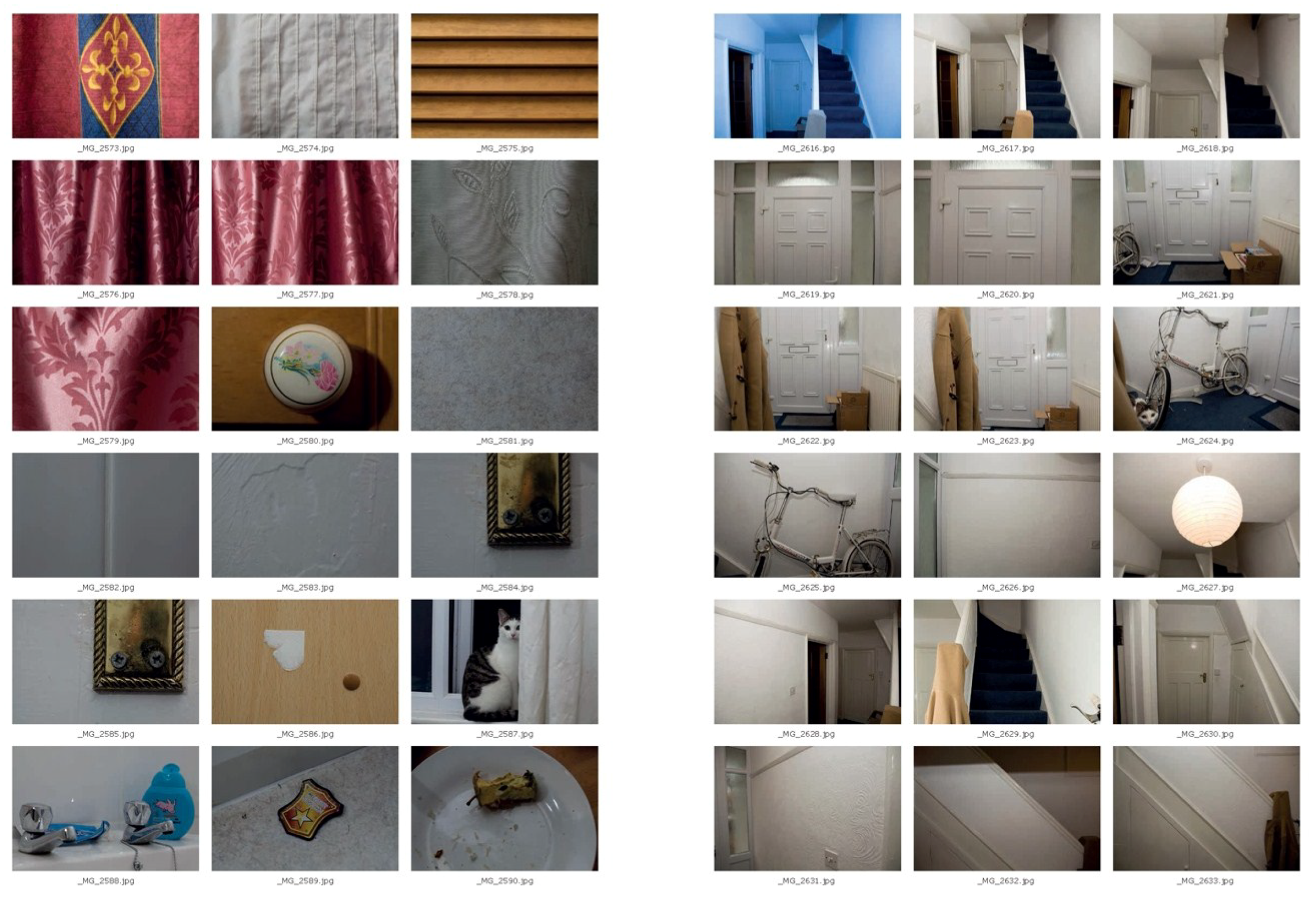
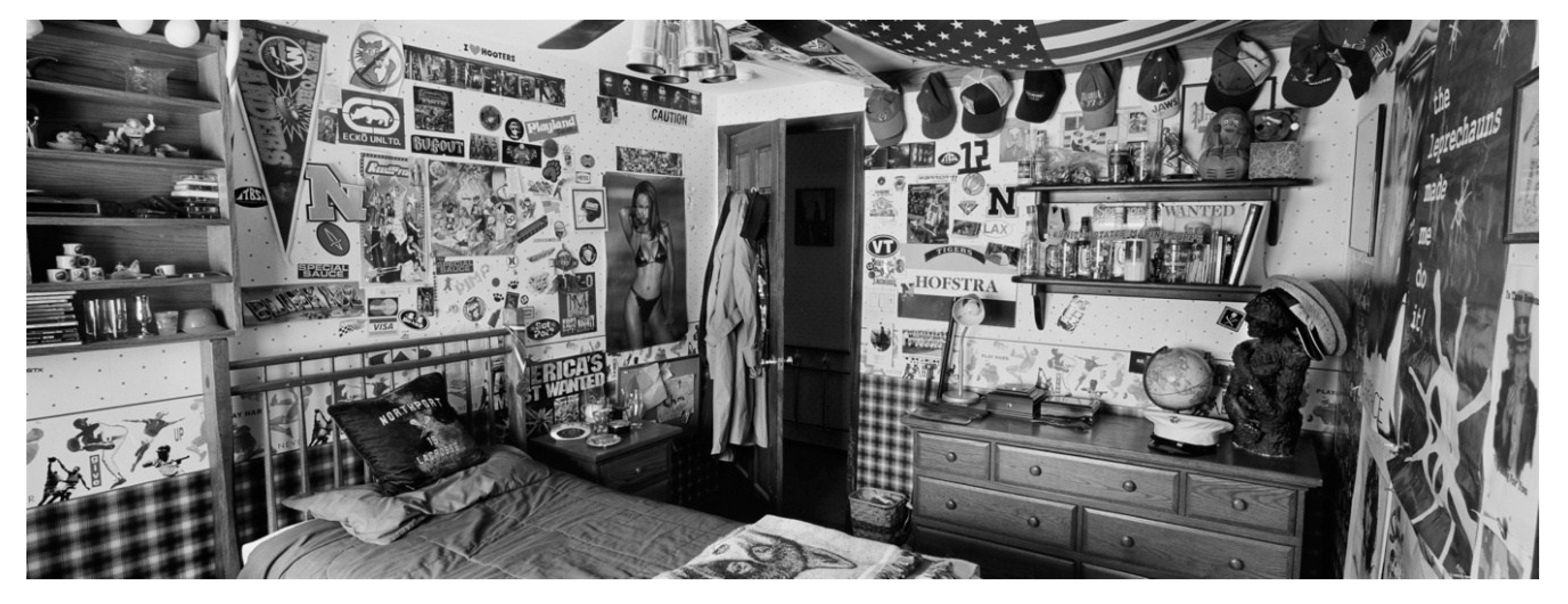
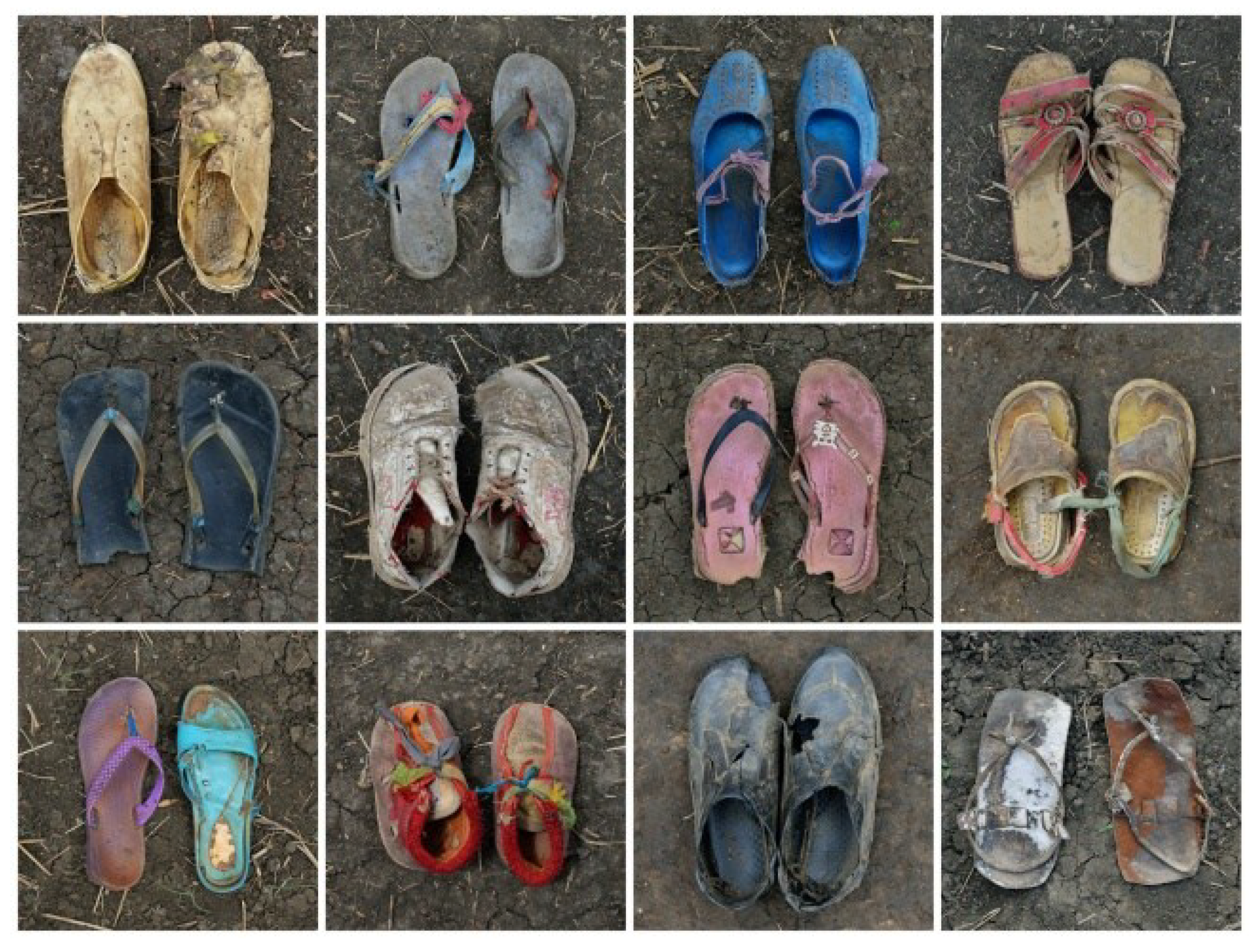
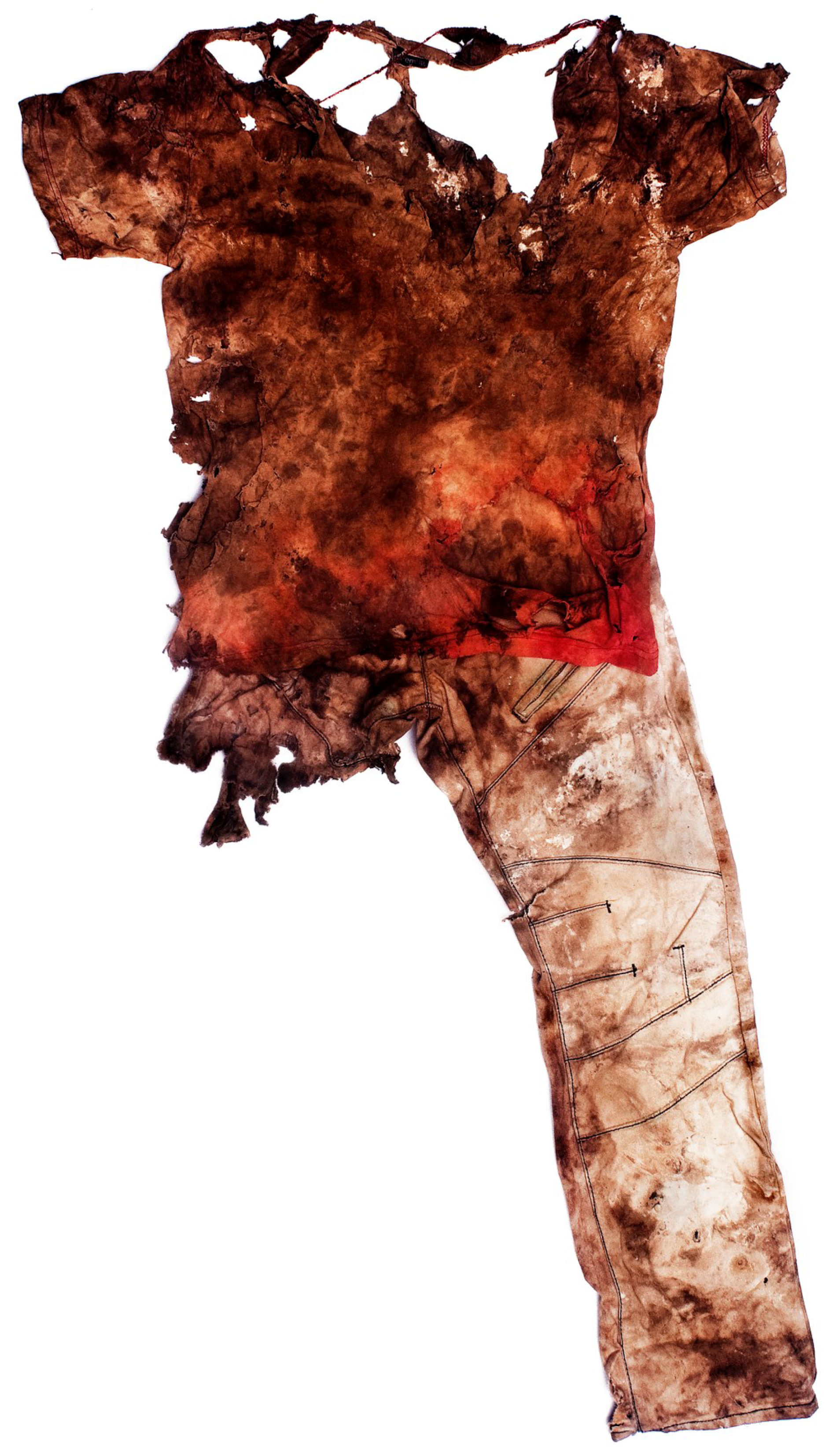
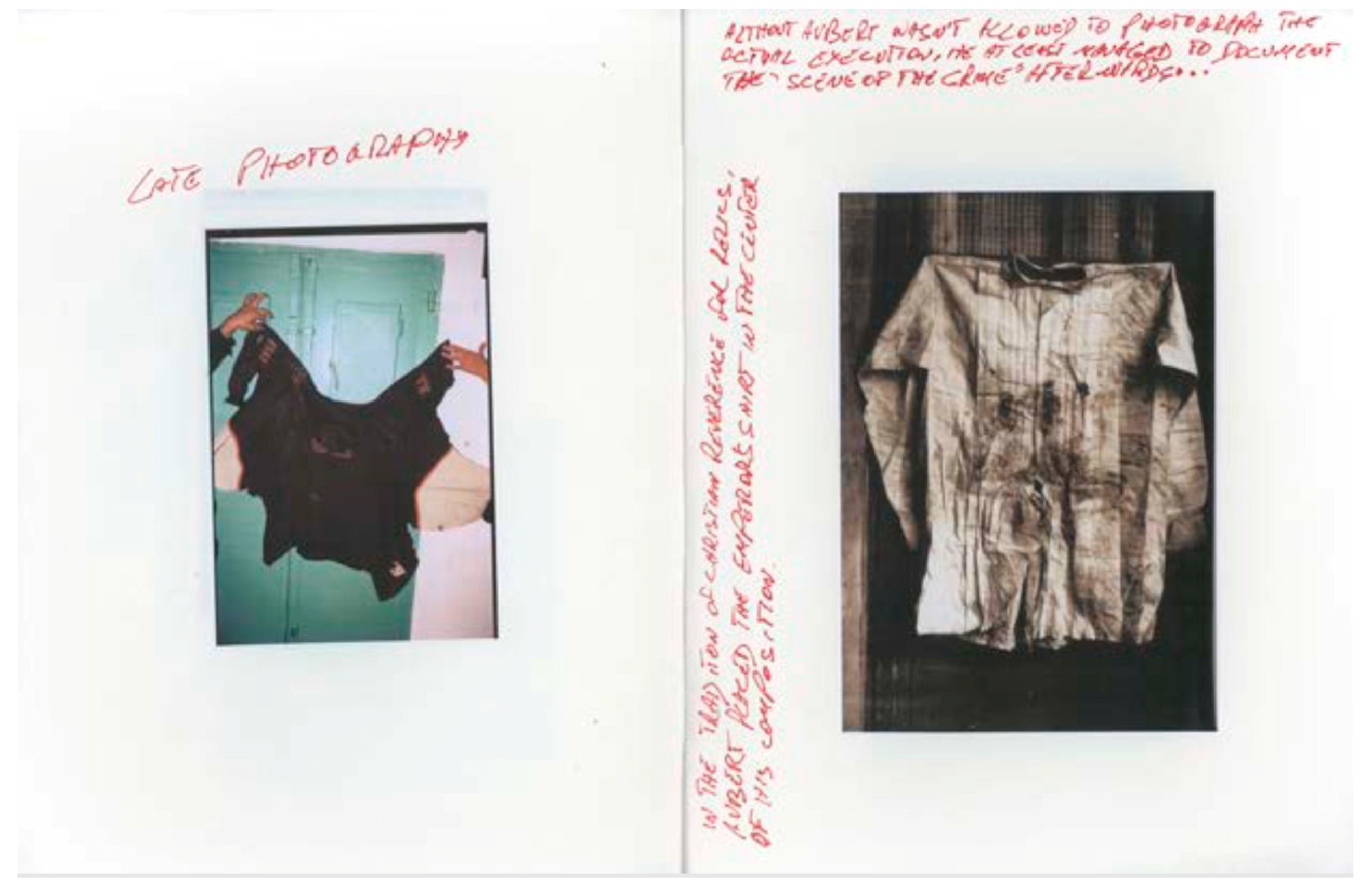
© 2018 by the author. Licensee MDPI, Basel, Switzerland. This article is an open access article distributed under the terms and conditions of the Creative Commons Attribution (CC BY) license (http://creativecommons.org/licenses/by/4.0/).
Share and Cite
Lowe, P. Traces of Traces: Time, Space, Objects, and the Forensic Turn in Photography. Humanities 2018, 7, 76. https://doi.org/10.3390/h7030076
Lowe P. Traces of Traces: Time, Space, Objects, and the Forensic Turn in Photography. Humanities. 2018; 7(3):76. https://doi.org/10.3390/h7030076
Chicago/Turabian StyleLowe, Paul. 2018. "Traces of Traces: Time, Space, Objects, and the Forensic Turn in Photography" Humanities 7, no. 3: 76. https://doi.org/10.3390/h7030076
APA StyleLowe, P. (2018). Traces of Traces: Time, Space, Objects, and the Forensic Turn in Photography. Humanities, 7(3), 76. https://doi.org/10.3390/h7030076



